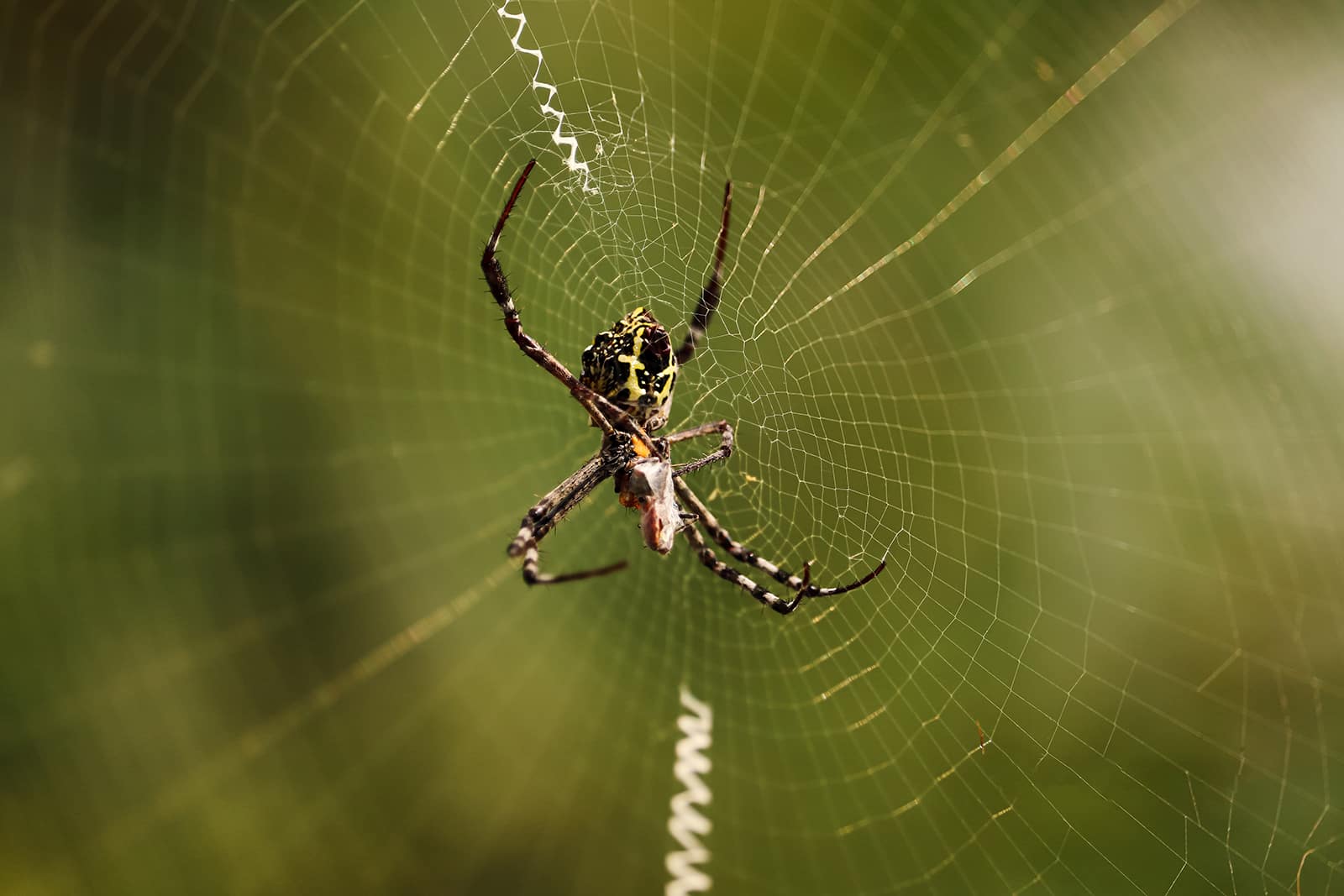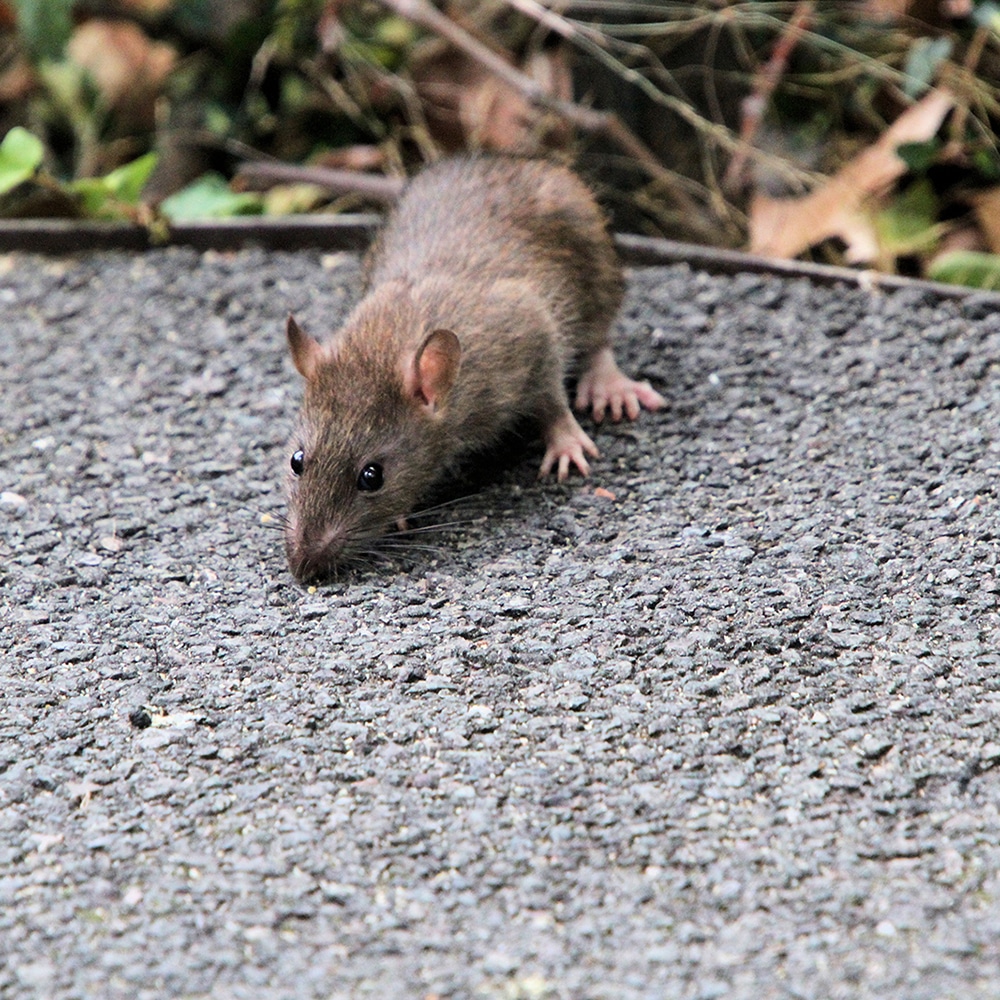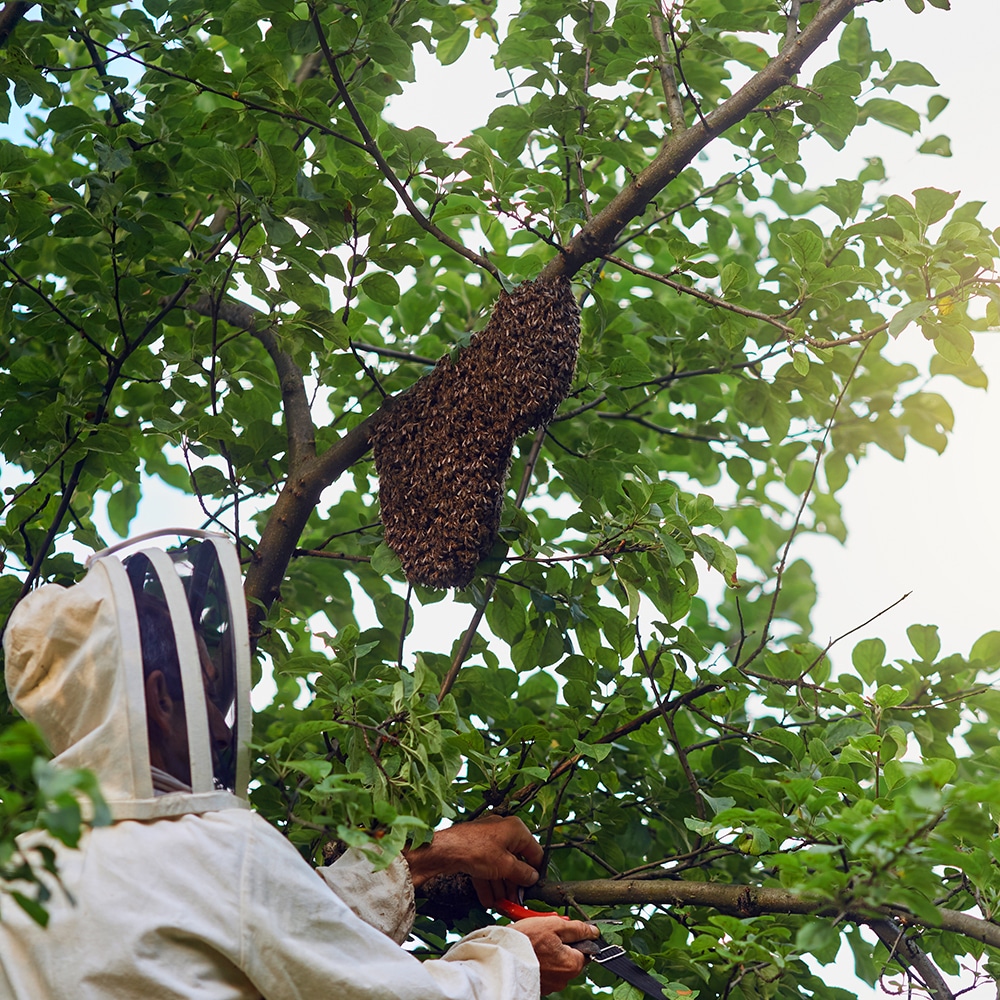
Why Do Spiders Come Back And Why
Why Do Spiders Come Back And Why On The Central Coast NSW. Responsive Proactive Solutions. Detail-focused for lasting results. Call Adam on 0431 222 894
Avoiding pests through landscaping is a smart strategy for homeowners. On the Central Coast NSW, the right landscaping choices can deter unwanted critters. For expert advice, visit Vital Pest Control. Let’s dive into effective techniques that can protect your home while enhancing its beauty.
Using Pest Resistant Plants
Pest-resistant plants act as natural barriers. They reduce the need for chemical treatments, offering a reliable and trustworthy solution. Consider native species that thrive in Central Coast NSW conditions. These plants deter pests by being less appealing as a food source.
Correct Mulch Depth
Avoiding pests through landscaping involves proper mulch depth. Too much mulch can attract insects and rodents. Aim for a depth of 5 to 7 centimetres. This keeps moisture levels optimal without providing shelter for pests.
Pruning Shrubs Away from Walls
Prune shrubs away from walls to prevent pest bridges. This practice is both fast and responsive in keeping insects out. Trim branches regularly to maintain a gap, allowing for easy pest monitoring.
Managing Compost Bins
Properly managed compost bins deter pests. Use lids and turn contents often to accelerate decomposition. This limits pest access to food sources, maintaining a clean and efficient garden space.
Preventing Stagnant Water
Stagnant water invites mosquitoes. Regularly check pots, gutters, and bird baths. Ensuring water flow prevents pest breeding grounds, offering quality over quantity in pest control.
Mowing Lawn to Recommended Height
Mow your lawn to the recommended height for your grass type. This promotes healthy growth and reduces pest habitat. Regular mowing deters insects by exposing them to natural predators.
Creating Buffer Zones Near Home
Buffer zones between your home and garden limit pest access. Use gravel or stones next to walls. These zones are effective and easy to maintain, reducing pest hiding spots.
Limiting Dense Vegetation
Dense vegetation provides shelter for pests. Maintain open spaces and use sparse plant arrangements. This approach is practical and reduces pest attraction naturally.
Discover how we can help you today. Visit Contact for more information.

In the Central Coast of NSW, homeowners seek effective methods for natural pest control. One sustainable approach is utilising pest-resistant plants. These plants help maintain a healthy garden without relying heavily on chemicals. By incorporating pest-resistant varieties, you can create a landscape that naturally deters unwanted insects and diseases, ensuring a thriving outdoor environment.
Benefits of Pest-Resistant Plants
Pest-resistant plants offer several advantages. They reduce the need for pesticides, which can harm beneficial insects and the broader ecosystem. These plants often have built-in defences like thick leaves or bitter tastes, making them unappealing to common pests. Selecting these plants can lead to a healthier garden with fewer maintenance requirements.
Choosing the Right Plants for Central Coast NSW
When selecting pest-resistant plants, consider the local climate and soil conditions. In Central Coast NSW, native plants like grevillea and kangaroo paw thrive and resist regional pests. These plants have evolved to handle local insects, offering a natural defence system. Including them in your garden not only controls pests but also supports local biodiversity.
Integrating Pest-Resistant Plants into Your Landscape
To maximise their benefits, strategically place pest-resistant plants throughout your garden. Position them near vulnerable crops or flowers to serve as a natural barrier. Combining these plants with other pest control methods, such as companion planting, can create a robust defence system. This holistic approach ensures your garden remains vibrant and productive year-round.
Mulching plays a significant role in pest control, especially in the lush landscapes of the Central Coast, NSW. Getting the mulch depth right is crucial for keeping pests at bay while promoting healthy plant growth. Too much or too little can have adverse effects, making it essential to find that perfect balance.
Understanding Optimal Mulch Depth
The ideal mulch depth should be around 5 to 7 centimetres. This thickness helps retain soil moisture, suppress weeds, and regulate soil temperature, creating a less hospitable environment for pests. When mulch is too thick, it may trap excess moisture, encouraging pests and diseases. Conversely, too thin a layer may fail to provide adequate protection, leading to increased weed growth and pest activity.
Choosing the Right Mulch Material
Organic mulches like bark or wood chips are popular choices on the Central Coast. These materials decompose slowly, adding nutrients to the soil while maintaining the optimal mulch depth. It’s important to avoid mulches that retain too much moisture, as they can become breeding grounds for pests. Selecting the right material and maintaining the correct depth helps create a pest-resistant landscape.
Regular Mulch Maintenance
To ensure mulch remains effective, regular maintenance is necessary. Check the mulch depth periodically, especially after heavy rain or wind. Add more mulch if needed to maintain the 5 to 7 centimetre depth. This routine care helps sustain a healthy landscape, reducing the need for chemical pest control methods.
Pruning shrubs away from walls is a crucial step in maintaining effective pest control on the Central Coast of NSW. By keeping your landscaping in check, you can prevent unwanted critters from making your home their own. Regular maintenance not only enhances the aesthetic appeal of your property but also serves as a vital pest deterrent.
Preventing Access Points
Trimming shrubs near walls reduces the chances of pests finding entry points into your home. Overgrown branches and foliage can act as bridges for insects and rodents, offering them easy access to cracks and crevices. By keeping your garden neat, you lessen the risk of infestations, ensuring a safer, more comfortable living environment.
Improving Air Circulation
Proper pruning enhances air circulation around your property. Dense shrubs can trap moisture against walls, creating a damp environment that attracts pests like termites and mould. By thinning out these areas, you encourage airflow, helping to keep your walls dry and less inviting to pests, thus maintaining a healthier home.
Reducing Shelter for Pests
Pruned shrubs offer fewer hiding spots for pests. Dense vegetation provides a safe haven for insects and small animals. By regularly cutting back overgrown areas, you disrupt these habitats, making your garden less appealing to unwanted guests. This proactive approach helps keep your property pest-free.
Maintaining compost bins effectively can significantly aid in vital pest control on the Central Coast, NSW. Composting offers a sustainable way to enrich soil, but if not managed properly, it can attract unwanted pests. Implementing strategic measures can keep your compost bin pest-free, ensuring a thriving garden landscape.
Location and Setup
Positioning your compost bin in the right spot is crucial. Choose a well-drained area away from your home and garden plants. A secure lid is essential to deter animals like rodents or possums. Ensure the base is in contact with soil to allow beneficial organisms to enter while keeping pests at bay. Regularly turn the compost to aerate it and speed up decomposition.
Balance Green and Brown Materials
Maintaining the right balance of green and brown materials helps deter pests. Too much green material like food scraps can attract flies and rodents. Mix in dry leaves or shredded paper to balance moisture levels and reduce odours. This balance not only prevents pests but also accelerates the composting process.
Monitor Moisture Levels
Proper moisture content is key in managing compost bins. Excess moisture can lead to unpleasant smells and pest issues. The compost should feel like a damp sponge, not too wet or dry. Adjust by adding dry materials or watering if necessary. Regular monitoring ensures a healthy compost environment, discouraging pest infestations.
Stagnant water on the Central Coast NSW can quickly become a breeding ground for pests, posing risks to both health and property. Effective pest control begins with eliminating sources of standing water, a critical step in maintaining a pest-free landscape. By understanding how to prevent stagnant water, you can protect your home and garden from unwanted invaders.
Identify Common Water Collection Points
Begin by surveying your property for areas where water might accumulate. Gutters clogged with leaves, poorly drained garden beds, and uneven pavements can trap rainwater. Regularly cleaning and maintaining these areas ensures water doesn’t remain longer than necessary, reducing the chance for pests to thrive.
Improve Drainage Systems
Investing in proper drainage solutions is vital. Ensure your landscape has sufficient slopes and drains to direct water away from your home. Installing French drains or using soil that promotes drainage can help manage excess water. This proactive approach prevents water from pooling, discouraging mosquitoes and other pests.
Utilise Water Features Wisely
While water features add beauty, they can also invite pests if not maintained. Ensure fountains and ponds have a consistent flow of water or are treated with safe algaecides. Regularly checking and cleaning these features prevents them from becoming stagnant, keeping pests at bay.
Mowing your lawn to the right height is key for pest control on the Central Coast, NSW. Proper mowing not only enhances your yard’s appearance but also helps keep unwanted pests at bay. Grass that’s too long can provide hiding spots for insects, while grass that’s too short may stress the lawn, making it more susceptible to infestations. Finding the perfect balance is crucial for a healthy, pest-free garden.
Ideal Lawn Height
Maintaining the recommended height for your grass type helps create a dense lawn that crowds out weeds and pests. For most grasses common in Central Coast gardens, aim to keep it around 5 to 7 centimetres. This height allows the grass to photosynthesise effectively, promoting strong growth and reducing pest habitats. Consistent mowing at this height ensures a robust lawn that’s less inviting to pests.
Proper Mowing Techniques
Using the right mowing techniques can significantly impact pest control. Ensure your mower blades are sharp to make clean cuts, reducing stress on the grass. Avoid cutting more than one-third of the grass height at a time, as this can weaken the lawn and make it more vulnerable to pests. Regular mowing, especially during peak growing seasons, supports a healthy lawn ecosystem.
Seasonal Mowing Adjustments
Adjust your mowing habits according to the seasons to optimise pest control. During spring and summer, when growth is rapid, mow more frequently to maintain the recommended height. In cooler months, you can reduce mowing frequency but still aim to keep the grass at a healthy length. Proper seasonal adjustments help maintain lawn health and deter pests year-round.
Creating buffer zones near your home can be a practical solution for vital pest control on the Central Coast of NSW. By strategically designing your landscape, you can deter unwanted pests naturally. This approach not only reduces the need for chemical treatments but also enhances the aesthetic appeal of your property. Let’s explore some effective strategies to establish these protective zones around your home.
Choose Pest-Repelling Plants
Selecting the right plants is crucial for creating an effective buffer zone. Certain plants naturally repel pests due to their scent or properties. For instance, lavender, rosemary, and marigolds are known to deter mosquitoes and flies. Planting these around your home can create a natural barrier. Also, consider native plants that thrive in the Central Coast climate, which will reduce maintenance and support local biodiversity.
Maintain Proper Spacing
Proper spacing between plants is essential to ensure a healthy garden environment. Crowded plants can create humidity and shade, which are ideal conditions for pests. By allowing air to circulate freely, you reduce the risk of infestations. This practice also makes it easier to spot any potential pest problems early on, allowing for timely intervention.
Install Physical Barriers
Physical barriers play a significant role in pest control. Consider using mulch, stones, or gravel around your home’s perimeter. These materials make it difficult for pests to reach your home. Additionally, regularly check for gaps or cracks in fences and walls where pests might enter. Sealing these entry points will further strengthen your defence against unwanted visitors.
Managing dense vegetation is crucial for effective pest control on the Central Coast, NSW. Lush plant growth, while visually appealing, can become a breeding ground for unwanted pests. By strategically limiting dense vegetation, homeowners can reduce pest infestations and maintain a healthier landscape.
Understanding Pest Habitats
Pests thrive in overgrown areas where they find shelter and food. Dense vegetation provides an ideal environment for insects and rodents. By identifying these habitats, homeowners can target specific areas for thinning. This proactive approach reduces the likelihood of pest invasions, creating a more balanced ecosystem.
Strategic Plant Selection
Choosing the right plants can minimise pest issues. Native species adapted to local conditions often resist pests better than exotic plants. Opting for plants with natural pest-repelling properties enhances the landscape’s resilience. This strategic selection supports an eco-friendly approach to pest control, reducing reliance on chemical treatments.
Routine Maintenance Practices
Regular maintenance is essential for limiting dense vegetation. Pruning overgrown bushes and removing dead plant matter decreases pest habitats. Consistent upkeep not only controls vegetation but also enhances the visual appeal of the garden. By maintaining a tidy landscape, homeowners can effectively deter pests and promote a thriving outdoor space.
In the picturesque Central Coast of NSW, maintaining vibrant landscapes goes beyond aesthetics. Organic soil management plays a crucial role in vital pest control, promoting a healthier ecosystem. By focusing on enriching the soil naturally, homeowners can reduce pest problems without relying heavily on chemical solutions.
Enhancing Soil Health
Healthy soil forms the foundation of robust landscapes. By integrating organic matter such as compost or mulch, the soil becomes rich in nutrients, fostering plant health. This not only encourages strong growth but also enhances plant resilience against pests. A thriving ecosystem naturally deters pests, making chemical interventions less necessary.
Promoting Biodiversity
Encouraging a diverse range of beneficial organisms in the soil helps maintain an ecological balance. Earthworms and beneficial microbes enrich the soil, creating an unfavourable environment for pests. By supporting these natural allies, gardeners can enhance their pest control strategies effectively.
Utilising Natural Amendments
Natural soil amendments like seaweed extract or rock minerals can be used to boost soil fertility. These organic solutions improve soil structure and nutrient content, ensuring that plants have everything they need to thrive. Strong plants are less susceptible to pest attacks, reducing the need for chemical pest control methods.
Creating a balanced ecosystem in your garden can be an effective strategy for natural pest control. On the Central Coast NSW, using natural predators is an eco-friendly way to manage garden pests and enhance your landscape. These beneficial creatures can significantly reduce the need for chemical treatments, promoting a healthier environment.
Ladybirds: Tiny Warriors
Ladybirds, often spotted on the Central Coast, play a vital role in pest control. These vibrant beetles feast on aphids, mites, and other soft-bodied insects. By encouraging ladybirds in your garden, you can naturally reduce pest populations. Planting dill, fennel, or cilantro can attract these helpful insects.
Birds: Nature’s Patrol
Birds act as vigilant pest controllers. Species such as wrens and robins consume a variety of garden pests including caterpillars and beetles. Installing bird baths and feeders can attract these birds, making your garden a safer, pest-free zone. Native shrubs also provide nesting sites and food, encouraging birds to settle.
Frogs: Moisture Lovers
Frogs are excellent at controlling pests like slugs and snails. They thrive in gardens with moist environments. Creating a small pond or regularly watering garden areas can encourage frogs to visit and help maintain pest balance. Avoid using pesticides that harm frogs, ensuring these predators can thrive.
Living on the Central Coast of NSW offers a unique blend of lush landscapes and coastal living, but it’s also home to many pests. Choosing the right fencing or netting is crucial for protecting your garden and outdoor spaces from these unwanted visitors. By strategically selecting materials that deter pests, you can maintain the beauty and productivity of your property.
Understanding Pest Behaviour
The first step in selecting effective fencing or netting is understanding pest behaviour. Different pests have varied habits, so tailoring your approach can make a significant difference. For instance, rabbits may burrow under fences, while birds often attack from above. Identifying the specific pests in your area will guide your choice of materials, ensuring you choose solutions that address these behaviours.
Choosing the Right Materials
Consider durable materials that suit your specific pest challenges. Metal mesh is effective for keeping out rodents and larger animals. For bird control, opt for fine netting that prevents access to fruit trees and vegetable patches. The material should withstand the local climate, ensuring longevity and reducing the need for frequent replacements.
Installation Techniques
Proper installation is key to the effectiveness of your fencing or netting. Ensure fences are buried to a depth that prevents burrowing pests from accessing your garden. When installing netting, secure it tightly to avoid gaps that pests can exploit. Regular maintenance checks will help spot any breaches early, allowing for quick repairs.
Seasonal garden inspections play a crucial role in maintaining effective pest control on the Central Coast of NSW. By adjusting to each season’s unique challenges, homeowners can keep their gardens healthy and pest-free. Regular inspections help identify potential pest issues before they become significant problems, saving both time and resources.
Springtime Surveillance
Spring signals new growth, which means increased activity for pests. During this period, inspect plant leaves for aphids and caterpillars. Check under pots and stones for slug trails and signs of snails. Pay attention to young plants as they are particularly vulnerable to attacks. Early detection during spring can prevent infestations from escalating.
Summer Checks
In summer, pests such as mites, thrips, and whiteflies thrive. Inspect the undersides of leaves for any signs. Look for wilted or discoloured foliage, which might indicate the presence of these pests. Regular watering can deter some pests, but ensure drainage is adequate to avoid attracting mosquitoes.
Autumn Assessments
Autumn requires vigilance as temperature changes can drive pests indoors. Inspect for ant trails and spider webs around the garden’s perimeter. Check mulch and leaf piles for earwigs and beetles. Clearing debris helps reduce hiding spots, thus limiting pest populations as they search for warmth.
Winter Precautions
Even in winter, pests can be problematic. Focus on overwintering insects like scale and mealybugs. Examine branches and bark for any unusual growths or deposits. Pruning and proper plant care during winter can help manage pest levels, ensuring a healthier garden come spring.
Maintaining tidy flower beds is crucial for controlling pests on the Central Coast NSW. By keeping these areas well-organised, you minimise the chance of pests finding a home in your garden. This simple practice supports a healthy garden environment, discouraging unwanted visitors and promoting vibrant plant growth.
Regular Weeding
Regular weeding is essential in keeping flower beds tidy. Weeds provide shelter for pests, so removing them promptly helps reduce potential habitats. Consistent weeding prevents competition for resources, allowing your flowers to thrive without interference. By dedicating a little time each week, you can maintain a neat and pest-free flower bed.
Proper Mulching
Mulching not only retains soil moisture but also acts as a barrier against pests. A well-applied layer of mulch can deter insects from settling in your flower beds. Choose organic mulch to improve soil quality while keeping pests at bay. Regularly check and replenish mulch to ensure its effectiveness in maintaining a healthy garden.
Pruning and Deadheading
Pruning and deadheading are vital for pest control. By removing dead or excess foliage, you reduce hiding spots for pests. This practice encourages new growth and keeps your plants looking their best. Regularly inspect your flower beds, trimming any overgrown sections to maintain a tidy and pest-free environment.
On the Central Coast of NSW, managing plant health is crucial for effective pest control. Infected plants can become breeding grounds for pests, making prompt treatment essential. Quick intervention not only saves the plants but also reduces pest spread, keeping your landscape lush and healthy.
Identifying Signs of Infection
Spotting infection early is key. Look for symptoms like discoloured leaves, wilting, or unusual spots. Regularly inspecting plants helps catch problems before they escalate. Quick identification allows for faster treatment, preventing pests from taking hold.
Applying Appropriate Treatments
Once an infection is identified, choose the right treatment. Organic solutions are often effective and environmentally friendly. Neem oil, for example, can combat many common pests and diseases. Ensuring the treatment is suitable for the specific infection aids in recovery and deters further pest issues.
Ensuring Consistent Monitoring
After treating infected plants, ongoing monitoring is vital. Regular checks help assess treatment effectiveness and catch any new issues. This vigilance keeps your garden resilient, reducing the chances of pest outbreaks. Consistency in monitoring maintains a healthy landscape, promoting long-term pest control.
On the Central Coast of NSW, nurturing beneficial insects can play a crucial role in natural pest control. By incorporating certain plants and practices into your landscaping, you can attract these helpful insects, reducing the need for chemical pesticides and fostering a healthy ecosystem.
Plant Diversity for Insect Attraction
Embracing a wide variety of plants can draw beneficial insects to your garden. Native Australian plants, like bottlebrush and grevillea, provide nectar and pollen, attracting beneficial insects such as ladybirds and lacewings. These insects are natural predators of common pests. By incorporating these plants, you create a welcoming environment for them, aiding in pest management.
Creating Habitats for Beneficial Insects
Providing habitats for beneficial insects encourages them to stay in your garden. Install insect hotels, which offer shelter for pollinators and pest predators. Leaving patches of undisturbed soil allows ground beetles to thrive, which can help control pest populations. These habitats foster a balanced ecosystem, promoting natural pest control.
Integrated Pest Management Practices
Implementing integrated pest management helps maintain a pest-free garden. Regularly monitor pest levels and only intervene when necessary. Encourage beneficial insects by reducing pesticide use, allowing them to manage pests naturally. Mulching and composting enrich the soil, supporting plant health and indirectly promoting beneficial insect activity.
Please leave your details in the form and we will call you back the same day.
So that we can process your enquire efficiently please leave as many details as possible and upload any relevant images. (.jpg and .png format)

Why Do Spiders Come Back And Why On The Central Coast NSW. Responsive Proactive Solutions. Detail-focused for lasting results. Call Adam on 0431 222 894

Building a Long Term Residential Pest Protection Plan For Home Owners On The Central Coast NSW. Responsive Proactive Solutions. Detail-focused for lasting results. Call Adam on 0431 222 894

How to Protect Your Home from Wasp Infestations On The Central Coast NSW. Responsive Proactive Solutions. Detail-focused for lasting results. Call Adam on 0431 222 894